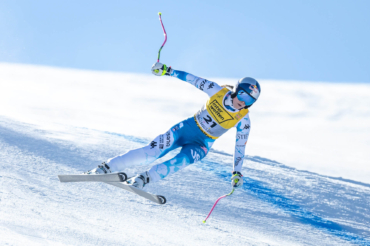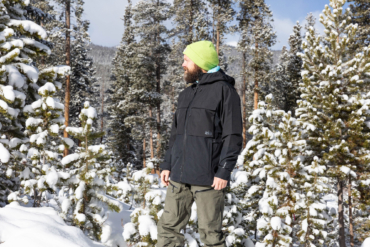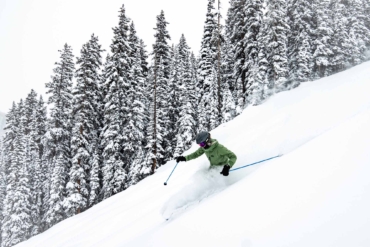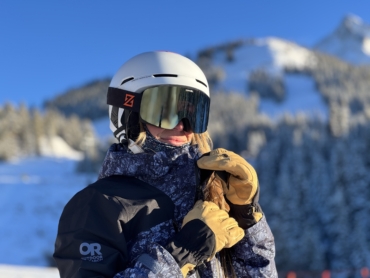Does the concept of winter camping make you shiver? It shouldn’t. Here, we simplify how to camp in cold weather with gear you can find online.
Our new column, sponsored by Amazon, covers gear to get you outdoors.
I took my first winter camping trip more than 20 years ago. I used cheap gear to sleep outside in below-zero temps, and it wasn’t exactly fun.
Thankfully, winter campers have better gear choices today. This article is a primer for anyone with little-to-no winter camping experience. Read on to learn how.
Sleeping Bags For Winter Camping
This is the most important piece of gear for winter camping – it also tends to be the most expensive, particularly if you choose a high-quality down bag (and you probably should). For those who camp where the snow flies, consider a bag rated for 0 degrees F or below.
Yes, that’s a very warm sleeping bag, but you’ll be surprised how comfortable it is at 20 degrees F. And when the weather really gets cold, layer up inside the bag to keep warm (enough) below zero.
For those with the budget, the Big Agnes Storm King 0 Sleeping Bag is an exceptional choice that we’ve used on many cold nights. It’s an investment at about $350, but it should last for years with proper care.
Need a less expensive option? The Slumberjack Latitude -20 Degree Bag is a good value and extremely warm, though heavy at over 6 pounds. (Synthetic insulation adds a lot of weight.) But, for about $80, it’s a bargain that’ll keep you warm through bitter weather.
Sleeping Pads For Winter Camping
A pad is the second most important piece of gear for winter camping. In winter the ground is cold, and your sleeping bag will provide little insulation from below because it compresses under your weight. You may be sleeping on snow, so a pad will buffer the chill as well as keep you dry.

You need a pad. Our top choice for an inflatable pad in the winter is the Sea to Summit Comfort Plus. This model is excellent year-round, with an R-value of 5.0 to keep you warm.
Most importantly, it has separate chambers on each side – if one chamber leaks due to puncture, the other provides a level or redundancy. It’s a great choice but expensive at $160.
An inexpensive choice is the Therm-a-Rest RidgeRest SOLite Mattress. This foam pad cannot deflate. It’s light, and the brand guarantees an R-value of 2.8. And, while not super cushy, it works as a barrier against the cold, frozen ground.
If weight and pack size aren’t issues for you, you might consider two pads. We often stack pads (one foam, one inflatable) to create a formidable buffer to the snow and heat-sucking ground below.
Camp Stoves For Winter Camping
A stove is critical for winter camping. Not only does it cook food, but it often makes your water from melted snow. It’ll boil water to stash in a bottle at the foot of your sleeping bag (a hack for staying warm at night). Never leave home for winter camping without a stove; it can make or break a trip.
A lot of people like the convenience of canister stoves, and they certainly can work in winter. But due to cold weather, they are less efficient than gas models. In extreme cold, canisters may not work at all. (Plus, canisters are throwaway products, which create needless waste.)
We prefer white gas as fuel. It’s cheap, easy to find, and very effective. For the last few years, I’ve used a Kovea Booster for probably close to 300 camp meals, and I absolutely love it. At about $100, it has a lot of power for melting and boiling snow into drinkable water. The simmer control isn’t great, but it’s good enough to cook eggs without burning them. And fuel is cheap, at about $15 per gallon (enough to last me a year).
The Kovea even functions on butane canisters if you must go the disposable route. The only caveat with this stove is it needs to preheat to function on white gas, so it takes a couple minutes to get it running properly.
For those who must go the canister route (and yes, I know they’re super popular), a stove like the MSR Windburner is a good choice. At $100, it’ll serve you well for pretty much all camping needs.
Winter Camping Tents
Winter camping and tents are a funny discussion. Start with the fact that winter tents are usually called “four-season tents” but absolutely suck in the spring, summer, and fall. Then consider that, in a lot of winter weather, a tent does little but cause condensation.
A tent won’t keep you very warm, but it keeps wind and snow at bay. So, when the weather is simply clear and cold, a tent may not be needed. Better to sleep on a pad under the stars.
Another option, and one that many winter campers rely on, is to simply sleep under a tarp. A model like the Rab Siltarp 1 is lightweight and waterproof; it’ll keep the sun off during the day and can protect against moderate snowfall as you sleep on a pad (in your winter-rated bag) underneath.
If weight is not an issue, tarps are cheap. You can use a hardware store tarp for car camping winter setups. Or, a step up is something like this ripstop model ($26), which covers a 10-by-10-foot area.
That said, most people will want a tent due to wind and snow, as well as the zip-shut shelter and “base” it provides out there.

For the casual winter camper, here’s a hack: Simply use your typical “summer”/three-season tent. It’ll block wind and give shelter from snow or sleet in all but the worst conditions.
We like the Nemo Hornet for backpacking, although it gives minimal protection in the winter. Don’t expect it to keep much snow out in windy conditions due to the huge amount of mesh on the tent body.
The Marmot Tungsten is another great option for a tent that can stretch into light winter use. But, again, this is only for casual winter camping when you are close to a bail-out option.
‘Four-Season’ Winter Camping Tents
If you’re getting serious and camp out in bad winter weather far from civilization (or in alpine areas), it’s time to buy a real winter tent. We’d like to kill the term “four-season tent” – now and forever.
These are specialized tents, and we’ve used a few. They are built to stand up to snow that accumulates on the roof and major wind. These tents generally serve as sanctuaries or escapes from the weather on the other side of the thin, nylon walls.
 There are many good winter mountaineering tents on the market, and they tend to be heavy and expensive.
There are many good winter mountaineering tents on the market, and they tend to be heavy and expensive.
For expedition-level camping, The North Face Mountain 25 and Marmot Thor 3-person tent are both available on Amazon. They provide a base camp in the woods or the mountains.
The added weight of these models (they average 7+ pounds) pays off with a tiny home dialed for deflecting the gales and spindrift winter brings.
Base Layers (a.k.a. “Long Underwear”)
We love the warmth, comfort, and stink resistance of merino wool. Thus, merino is among our top choices for winter camping base layers. Put it on at the beginning of an adventure, and don’t take it off until it’s over.
A good value wool brand found on Amazon is called Woolx. We’ve tested several models from the company and found them competitive with more expensive brands. The men’s midweight bottoms and tops, also available for women, are soft, cozy, and nicely finished.
Merino wool may seem overly expensive, but its long-term value is proven. It also just feels better on the skin than the synthetic alternative.
However, if you’re on a budget, there are many options. Look for polypropylene (not cotton-based) base layers. We like the Helly Hansen HH Dry Base Layer Pant for men and women as one top choice.
Winter Hats
Don’t overlook a hat. The choices are sort of endless here, but you should have a stocking cap to keep your head warm all night.
For a nice, USA-made wool hat, try the Filson Skull Cap at $36. We’ve also used and love The North Face Banner Beanie, $26, for years. Many other options exist, but be sure to bring a cozy cap to stay warm out there in the winter wonderland, day and night.
–This article is part of our new series, “Amazon Outfitter,” and is sponsored by Amazon. It was written by GearJunkie managing editor Sean McCoy.












